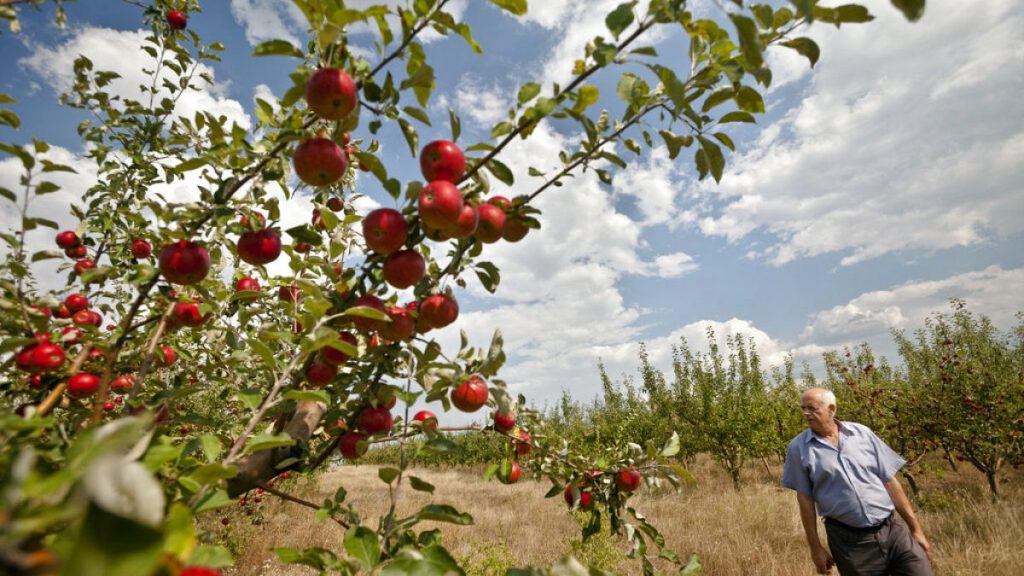Many fruit farmers in Europe are facing concerns about their summer harvests due to an unexpected cold snap that has hit the region. The Balkan states have experienced a drastic drop in temperatures from near-record highs to unseasonal lows, resulting in snow and ice covering much of the area. This sudden change in weather has had a devastating impact on fruit crops, with one farmer in Croatia noting that all of their fruits have been destroyed. In Poland, strawberry farms have been particularly hard hit by frosts reaching -8C, further exacerbating the situation for farmers across Europe.
Despite the challenges posed by the cold snap, some farmers in the Netherlands have found innovative ways to protect their fruit trees from the icy conditions. By spraying the buds of their trees with water, a frozen crust forms that actually helps to insulate the buds and keep them slightly warmer. This insulation prevents the buds from dying and offers some protection against the extreme temperatures. Farmers like Joost van Diepen have seen success with this method, as the layer of ice on the branches and fruit provides a certain level of heat that keeps the temperature just above zero, ensuring the survival of the crops.
In addition to the impact on fruit crops, heavy snowfalls at higher altitudes have created challenging conditions for drivers, many of whom have had to switch back to winter tires. The extreme weather conditions have disrupted daily life in many parts of Europe, as residents and farmers alike struggle to cope with the unexpected cold temperatures and snow. Forecasters are predicting that these extreme conditions will persist into the following week, adding further uncertainty and concern for those reliant on agriculture for their livelihoods.
The unseasonably cold weather in Europe has raised serious concerns about the impact on the continent’s food supply. With fruit crops already suffering from the drastic temperature changes, there is a risk of shortages and potential price increases in the coming months. Farmers are facing significant losses as their crops are destroyed by the sudden cold snap, impacting their ability to earn a living and provide food for the population. The broader implications of this extreme weather highlight the vulnerability of agriculture to climate change and the need for innovative solutions to adapt to changing conditions.
As farmers grapple with the fallout from the cold snap, there is a sense of urgency to find ways to mitigate the damage and protect future harvests. With unpredictable weather patterns becoming more common, farmers are exploring new techniques and strategies to safeguard their crops against extreme temperatures and weather events. The resilience and ingenuity of farmers in the face of adversity is evident in the efforts to protect fruit trees using methods like spraying with water to create a protective ice layer. However, the challenges posed by climate change and shifting weather patterns require long-term solutions and support to ensure the sustainability of agriculture in Europe.
In conclusion, the unexpected cold snap in Europe has had a devastating impact on fruit farmers, threatening their summer harvests and raising concerns about the continent’s food supply. The extreme weather conditions have prompted farmers to implement innovative methods to protect their crops, but the broader challenges posed by climate change require long-term solutions and support. As Europe faces the reality of a changing climate, it is essential for farmers, policymakers, and communities to work together to build resilience and adapt to the challenges of unpredictable weather patterns. The current cold snap serves as a stark reminder of the urgent need to address the impacts of climate change on agriculture and ensure the sustainability and security of our food supply in the face of evolving weather patterns.















